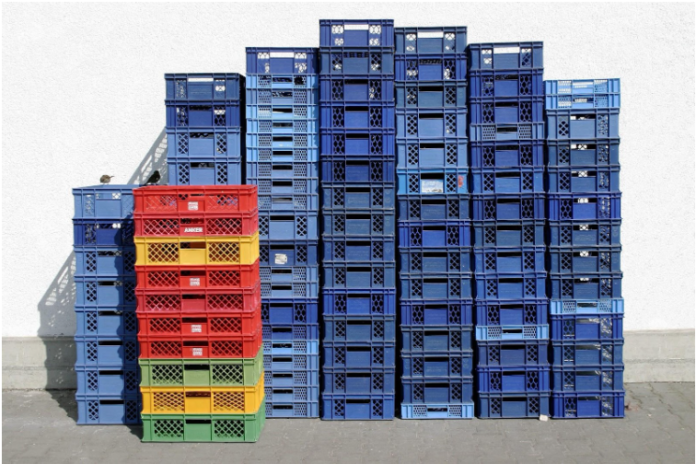In the food and beverage industry, maintaining high hygiene standards while optimizing storage and transport is crucial. Businesses need durable, easy-to-clean containers that can handle strict sanitation requirements without compromising on efficiency.
Nestable plastic crates have become an increasingly popular choice for this industry due to their practical design and hygienic benefits. They offer a reliable solution that meets both food safety regulations and operational needs.
Hygiene Advantages of Nestable Plastic Crates
One of the top reasons nestable plastic crates are preferred in the food and beverage industry is their superior hygiene. These crates are made from non-porous plastic materials that do not absorb moisture or bacteria, making them far safer than traditional wooden or cardboard containers. This helps companies comply with stringent food safety standards and prevents contamination.
The smooth surfaces of nestable plastic crates allow for easy cleaning and sanitization, which is essential for food handling environments. They resist chemicals and moisture, ensuring that the crates remain sanitary even after repeated use. This resistance also helps prevent the growth of harmful bacteria, a critical factor in food storage and transportation.
Ease of Cleaning and Maintenance
Cleaning is a major concern in the food and beverage industry, and nestable plastic crates are designed with this in mind. Their smooth, solid walls and rounded edges facilitate quick and thorough washing. These crates are compatible with standard industrial cleaning systems, including high-pressure washers and sanitizing agents.
Durability is another key benefit. The materials used in nestable plastic crates can withstand frequent cleaning without cracking or degrading, ensuring long-term usability. This robustness reduces the need for frequent replacements, making these crates a cost-effective investment for food and beverage businesses.
Space-Saving Nesting and Stacking Features
A standout feature of nestable plastic crates is their ability to nest inside one another when empty, dramatically reducing the amount of storage space required. This space-saving design is especially valuable in busy warehouses and transport vehicles where maximizing every cubic meter counts.
Additionally, when loaded, these crates can be safely stacked to optimize vertical storage space. This dual functionality of nesting and stacking helps companies streamline their warehouse logistics, lower storage costs, and improve overall workflow efficiency.
Versatility and Durability in Food and Beverage Applications
The versatility of nested plastic crates makes them suitable for a wide range of applications in the food and beverage industry. They are ideal for holding fresh produce, packaged goods, dairy products, bottled beverages, and more. The crates’ strong construction supports heavy loads and withstands rough handling during transport.
Their long lifespan and reusability contribute to cost savings, reducing waste and supporting sustainable business practices. With consistent quality and durability, nestable plastic crates provide a practical solution that meets the demanding needs of food and beverage operations.
Conclusion
For businesses in the food and beverage sector, choosing the right containers is essential to maintain hygiene, enhance efficiency, and save space. Nestable plastic crates offer all these benefits through their easy-to-clean surfaces, robust construction, and space-optimizing design. Investing in these crates ensures compliance with hygiene standards and helps streamline storage and transport processes.
You can check out reflexequip.com.au for a wide range of industry-grade nestable plastic crates designed specifically for food and beverage applications.

